#récamier
Text
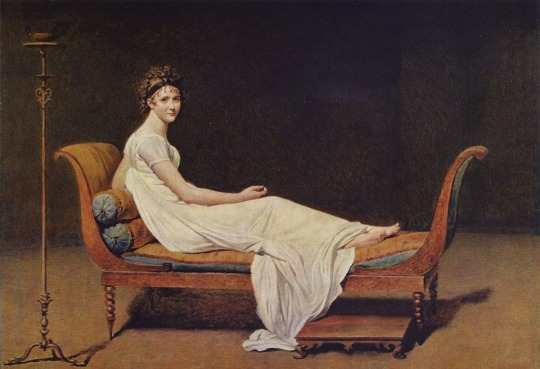

Madame Récamier
Jacques-Louis David, Neoclassical, 1800
René Magritte, Surrealist, 1949
#Madame Récamier#récamier#Juliette Récamier#jacques louis david#David#René Magritte#magritte#1800#1949#19th century#1800s#19th century art#20th century#20th century art#neoclassical art#neoclassical#neoclassicism#surrealism#surrealist#surrealist art#art#French#French art#Napoleonic era#France#empire style#painting#portrait#history#first french empire
4K notes
·
View notes
Text
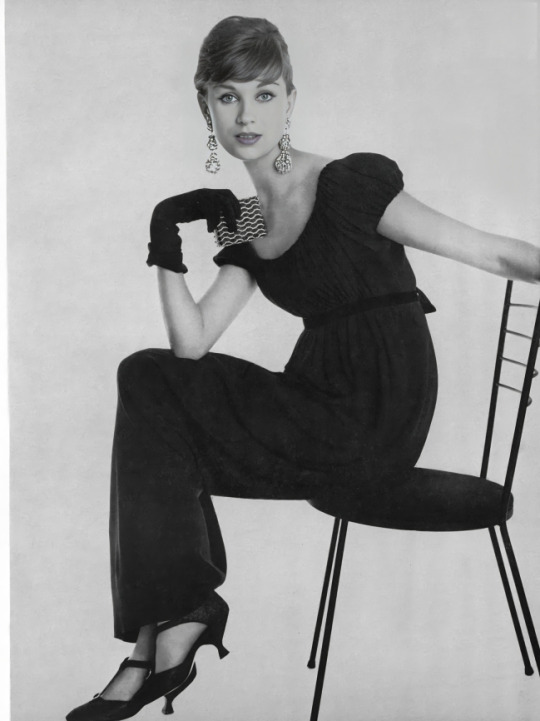
US Vogue June 1958
Anna Carin Bjorck in a black silk crepe Recamier evening dress. Fabric by Wm. Rose. Sparkling earrings by Schreiner. Deformable lamb leather gloves by Superb. Recamier chair by Anne Fogarty.
Anna Carin Bjorck en robe du soir Récamier en crêpe de soie noir. Tissu par Wm. Rose. Boucles d'oreilles scintillantes par Schreiner. Gants en cuir d'agneau déformable par Superb. Chaise Récamier d'Anne Fogarty.
Photo Irving Penn
vogue archive
#us vogue#june 1958#fashion 50s#1958#spring/summer#printemps/été#récamier#anne fogarty#spuperb#schreiner#evening gown#robe du soir#crepe dress#robe en crêpe#anna carin bjorck#irving penn
13 notes
·
View notes
Text

Bust of Madame Récamier, by Jean-Antoine Houdon (1741-1828) after Joseph Chinard (1756-1813)
#Bust of Madame Récamier#Jean-Antoine Houdon#Joseph Chinard#1700s#18th century#sculptor#art#art history#sculpture#art history blog#artwork
212 notes
·
View notes
Text
“This even seems a bit like pimping.”
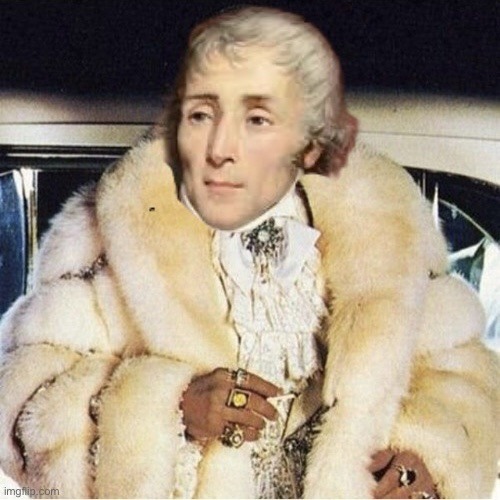
But the princely couple in which he will be most interested is that of Joachim Murat and Caroline, the most ambitious of Napoleon's sisters with Élisa. “Impressive in her pretensions,” Claire de Rémusat says of her, still dreaming of a throne as the Grand Duchess of Berg at the beginning of the Empire. At odds with Talleyrand, she very quickly sensed the services that Fouché could render her and entered into his intimacy. "She bound him to her by a host of little confidences," Madame de Rémusat goes on to say. Fouché allows himself to be approached with pleasure and does not miss an opportunity to be useful to her by placing his proteges in her service: "I am too zealous to do what can be useful to Your Imperial Highness,” he wrote to her about one of them. “[…] I will eagerly seize the first favorable opportunity.” There are a thousand of other such examples like this. He flatters the wife, but he also flatters the husband. We will never know how far this man's indulgence went when it was useful to his interests. In August 1805, he certainly acted as intermediary between Murat and the beautiful Juliette Récamier, Madame de Staël's friend, who turned all heads and in whom Napoleon's brother-in-law took a close interest. Lucien had already fallen in love with her at the start of the Consulate. It nearly became a family affair. We find in the private letters of Fouché to Murat sentences of this kind: “I have undertaken to fulfill the mission that Your Highness has entrusted to me. I presented my compliments to Mme R[écamier]. She sent me a letter in reply, which I have the honor to address to you.” This even seems a bit like pimping. At the same time, the former member of the Convention did everything to persuade the beautiful Juliette to enter the service of Caroline Murat, who at the time already had a court and "ladies for accompaniment." It would have made the husband's business easier. He would not succeed, despite the arrangement of a timely visit by Juliette Récamier to the Château de Neuilly where Caroline Murat was then residing. It never ends with Fouché. For years he would shower Caroline with praise, especially from 1808, when she became Queen of Naples. "She is further embellished on the throne and she knows how to spread charms, even in the circles of her court," he wrote to her husband in 1809. “We hope she does not quite become Neapolitan, and keeps a memory for the Parisians who think a lot about her and who will miss her all their lives.” As he moves away from Joséphine, he gets closer to the Murats, who detest her. They took his side strongly in the divorce affair, and Joachim did not miss an opportunity to support him with Napoleon. Caroline will be flattered to have as sister-in-law a descendant of one of the great sovereign houses of Europe. This will bolster her ambitions. In Fouché's eyes, Murat is popular and easy to maneuver. From 1807 and again in the last months of 1808, he was for him the ideal candidate, if by chance Napoleon were to die in Spain. When Murat came to the throne of Naples in August, he orchestrated a veritable propaganda campaign to his glory in the press. This will also be complained of in the entourage of Napoleon. “Fouche said loudly that he alone could succeed the Emperor, that he alone would inspire the necessary fear in Europe; that he alone enjoyed the confidence of the military.” For his part, the new King of Naples has every reason to be unhappy. He wanted to be king in Poland in 1807, then king of Spain in 1808. Naples is for him only a last resort, at worst a measure of separation. He also complains of being kept on the margin by Napoleon, who does not let him govern as he pleases, and Caroline continues to stir up his ambition. But Murat is only one card in Fouché's game. He is a joker in the event of a hard blow.
—Emmanuel de Waresquiel, Fouché: Les silences de la pieuvre, 2014.
43 notes
·
View notes
Text

Madame Récamier
#Madame Récamier#singer#woman#beauty#pretty#model#eyes#lips#sexy#hot#beautiful body#legs#thighs#beautiful hips#sexy hips#feet
14 notes
·
View notes
Text

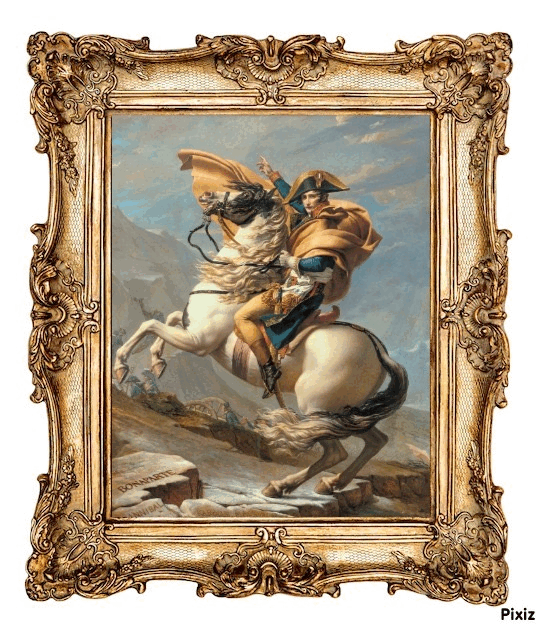



Disney's The Haunted Mansion | Changing Portraits (2003 Film Version)
The changing portraits appear in the 2003 film, "The Haunted Mansion", wherein they are different versions of the original ones in the Disney Theme Park Attraction. It is noted, however, that the portraits are historic paintings.
The changing portraits from the Disney Theme Park Attraction appearing in the 2003 film apply on the three historic paintings:
1. The portrait of Madame Récamier (Portrait of Jeanne Françoise Julie Adélaïde Récamier, known as Juliette) as the tiger lady (The Werecat Lady's Changing Portrait). In this film, as a real estate agent, Jim Evers (Eddie Murphy) walks through the portrait hall and passes by the portrait of Madame Récamier, she transforms into an orange tiger. This painting was originally done by François Pascal Simon Gérard. On the DVD Menu, the portrait of Madame Récamier appears in the "Captions and Subtitles" section.
2. The portrait of Napoléon Bonaparte at the Great St. Bernard Pass (a.k.a. Napoléon Crossing the Alps) as a skeleton (The Skeletal Horseman's Changing Portrait). In this film, as Jim Evers walks through the portrait hall and passes by this portrait, Napoléon Bonaparte transforms into a skeleton as an alternate to the Black Prince. This painting was originally done by Jacques-Louis David. On the DVD Menu, the portrait of Napoléon Bonaparte at the Great St. Bernard Pass appears in the "Audio Options" section.
3. The portrait of a Roman Lady (Portrait of Anna Risi, a.k.a. Nanna) as Medusa (Medusa's Changing Portrait). The portrait of Anna Risi becomes Medusa's gorgon form, with Caravaggio's depiction of the severed head of "Medusa" on a shield being applied when the portrait transforms. This painting was originally done by Sir Frederic Leighton. On the DVD Menu, the portrait of Anna "Nanna" Risi appears in the main "Set Up" section where she transformed.
The other two historic portraits in the 2003 film don't match perfectly when they change, but they're still similar. They include are as follows:
1. The portrait of View of Brest Harbor (Vue de la rade de brest prise au bas de la batterie du château) transforms into a ship on fire at night, with Xanthus Russell Smith's depiction of C.S.S. Manassas & U.S.S. Hartford in New Orleans Harbor (The Ship on Fire). That portrait looks different than the Flying Dutchman's changing portrait from the ride. This painting was originally done by Jean-François Hue.
2. The portrait of the Carnival Scene (or "The Minuet") transforms into hell (The Armageddon). In the 2003 film, the portrait was only hung in the Gracey Manor foyer at the grand staircase behind the foyer's clock passageway. And unfortunately, "The Armageddon" changing portrait was not in the portrait hall like what we see at Disneyland, nor Walt Disney World. This painting was originally done by Giovanni Domenico Tiepolo.
#disney#the haunted mansion#the haunted mansion 2003#disney's the haunted mansion#movie#2003#2003 film#halloween#welcome foolish mortals#999 happy haunts#eddie murphy#changing portraits#madame récamier#the tiger lady#the werecat lady#napoléon crossing the alps#the horseman#the skeletal horseman#skeleton#a roman lady#anna risi#medusa#the gorgon#medusa the gorgon#vue de la rade de brest prise au bas de la batterie du château#ship on fire at night#css manassas & uss hartford in new orleans harbor#the carnival scene#the minuet#the armageddon
4 notes
·
View notes
Text
Currently reading a biography of Juliette Récamier, and @josefavomjaaga Eugène made his appearance and stole a ring from her.
Masséna sneaked away with a ribbon by the way.
14 notes
·
View notes
Text
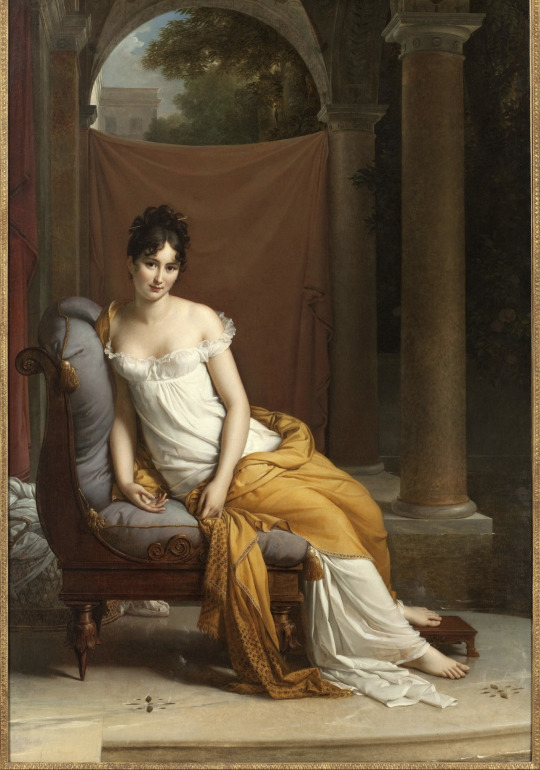
Madame Juliette Récamier
1802
4 notes
·
View notes
Photo
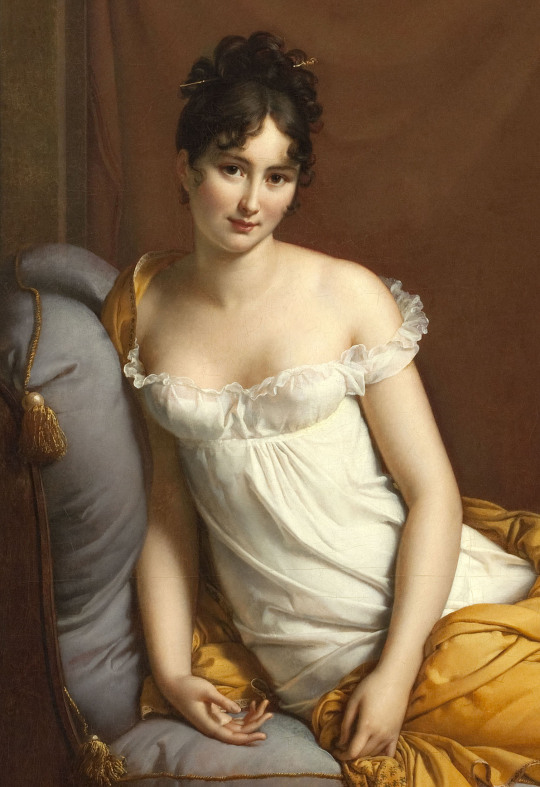
37 notes
·
View notes
Text
Arte 🖼️

“Retrato de Juliette Récamier” es una obra neoclásica del pintor francés François Gérard realizado entre 1802-1805.
4 notes
·
View notes
Text





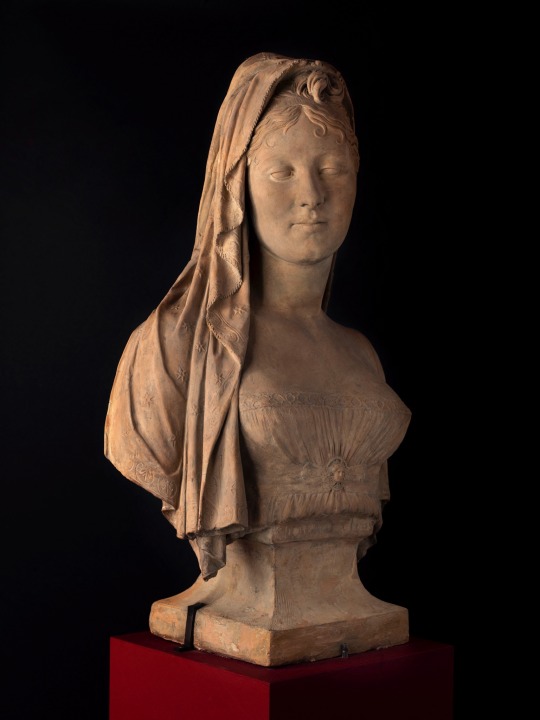


Terracotta bust believed to depict Juliette Récamier
Joseph Chinard
C. 1800-1805, Napoleonic era
Musée Cognacq-Jay
#terracotta#Juliette Récamier#Joseph Chinard#Chinard#Madame Récamier#Récamier#bust#napoleonic era#sculpture#napoleonic#first french empire#19th century#19th century art#1800s art#sculptures#neoclassical#neoclassicism#empire style#veil
435 notes
·
View notes
Text
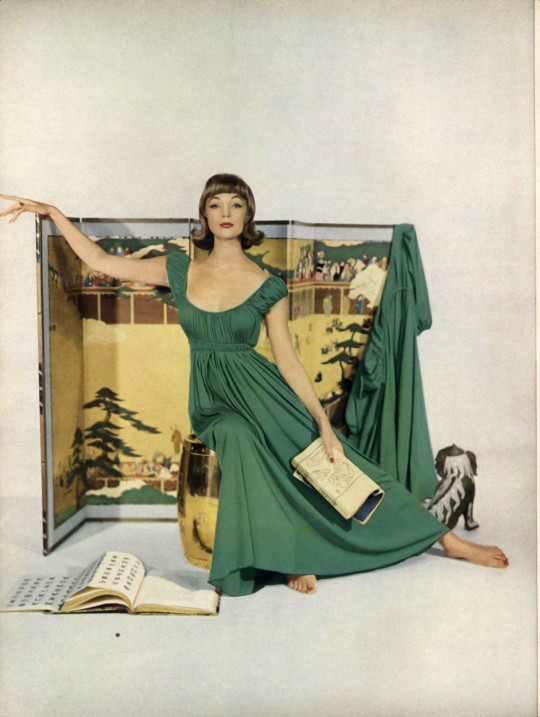
US Vogue November 15, 1958 ❤️❤️❤️❤️❤️
Ivy Nicholson wears a long crystal green nightgown, as does the three-quarter-sleeved robe hanging on a folding screen. They are both in the Récamier style characterized, among other things, by low gathered necklines, high waists, and ankle lengths. By Lucie Ann, in Burlington knit of nylon and silk. Lipstick for greens: Pink Camellia, this by Imperial Formula.
Ivy Nicholson porte un longue chemise de nuit vert cristal, tout comme le peignoir à manches trois-quarts accroché sur un paravent. Ils sont tous deux de style Récamier caractérisé entre-autre, par les encolures basses froncées, les tailles hautes, et les longueurs aux chevilles. Par Lucie Ann, en tricot Burlington de nylon et de soie. Rouge à lèvres pour les verts : Pink Camellia, ceci par Imperial Formula.
Photo Louise Dahl-Wolfe
vogue archive
#us vogue#november 1958#fashion 50s#fall/winter#automne/hiver#american style#lucie ann#burlington#ivy nicholson#louise dahl wolfe#nightgown#chemise de nuit#récamier#imperial formula
16 notes
·
View notes
Text
Madame Récamier
Francesco Pennisi (11 febbraio 1934 - 2000): Madame Récamier, due capricci per arpa (1978). Esegue Claudia Antonelli.
youtube
View On WordPress
0 notes
Text
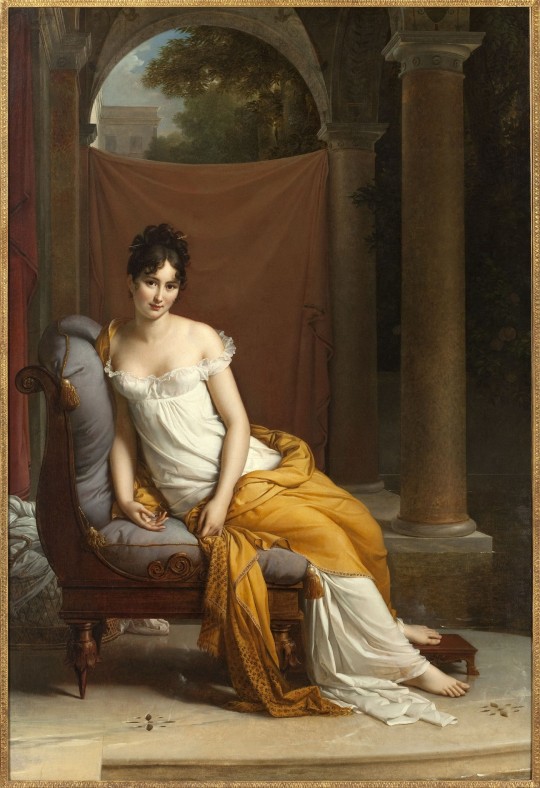
Francois Gérard (French, 1777-1837) • Madame Récamier • 1802 • Musée Carnavalet, Paris
#neoclassicism#women in white#art#la robe blanche#painting#white dress#women in paintings#19th century art#portrait#fine art#french painter#paintings of women#françois gérard
251 notes
·
View notes
Text
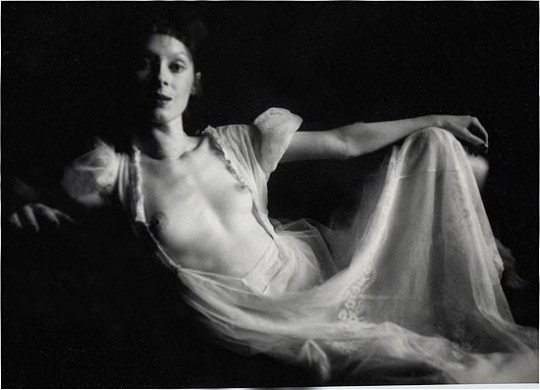
Photography by Karin Székessy
Madame Récamier, 1975
46 notes
·
View notes
Text

Madame Récamier
#Madame Récamier#Madame Recamier#singer#woman#beauty#pretty#model#eyes#lips#sexy#hot#beautiful body#legs#thighs#beautiful hips#sexy hips#feet
20 notes
·
View notes